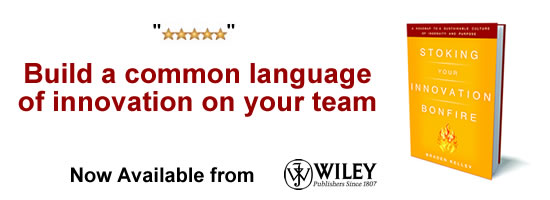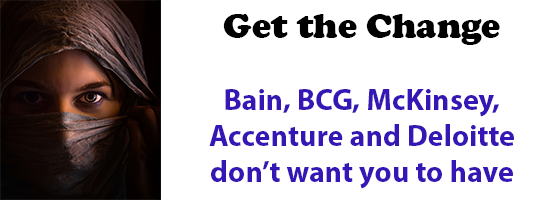
GUEST POST from Janet Sernack
At ImagineNation™ we have just celebrated 10 years as a global innovation consultancy, learning, and coaching company. During this time, we’ve identified some of the common patterns that people demonstrate as a result of feeling uncomfortable, frozen, inert, stubborn, and confused and as a result, are resistant to innovation. Where many organizations, teams, and leaders appear to walk backward as if they are sleepwalking through this time in their lives.
At the same time, we know that innovation is transformational, and why, at this moment in time, it is more important than ever to create, invent and innovate. We also know that is crucial to be better balanced, resilient, and adaptive to grow and flow, survive and thrive, in today’s chaotic BANI environment. We also know exactly what transformative innovation involves, and how to enable and equip people to connect and collaborate in new ways to effect constructive and sustainable change in a world of unknowns.
Innovation is, in fact, the water of life!
Shaping the next normal
According to a recent article by McKinsey and Co “The future is not what it used to be: Thoughts on the shape of the next normal” the coronavirus crisis is a “world-changing event” which is forcing both the pace and scale of workplace innovation.
Stating that businesses are forced to do more with less and that many are finding better, simpler, less expensive, and faster ways to operate. Describing how innovative health systems, through necessity, constraints, and adversity have exploited this moment in time, to innovate:
“The urgency of addressing COVID-19 has also led to innovations in biotech, vaccine development, and the regulatory regimes that govern drug development so that treatments can be approved and tried faster. In many countries, health systems have been hard to reform; this crisis has made the difficulty much easier to achieve. The result should be a more resilient, responsive, and effective health system”.
We all know that it is impossible to know what will happen in the future and yet, that it is possible to consider and learn from the lessons of the past, both distant and recent. On that basis, it’s crucial to take time out, be hopeful, and positive, and think optimistically about the future. To be proactive and innovate to shape the kind of future we all wish to have, through making constructive and sustainable changes, that ultimately contribute to the common good.
Strategically deciding to innovate
Strategically deciding to innovate, is the first, mandatory, powerful, and impactful lever organizations, teams, leaders, and individuals can pull to effect constructive and sustainable change that enables people to execute and deliver real benefits:
- Deal with, and find solutions to a world full of complex and competing social, civic, and political problems that are hard to solve and aren’t going away.
- Better adapt, respond to, and be agile in fast-changing circumstances, uncertainty, instability, and to random and unexpected Black Swan events, like the global Covid-19 Pandemic and the Russian-Ukraine war.
- Become human-centric to help people recover and manage their transition through the challenges of the global pandemic and enable them to exploit the range of accelerating technological advances in the digital age.
- Develop corporate responsibility, sustainability, diversity, and inclusion strategies that are practical and can work and really deliver on their promises.
- Compete by applying and experimenting with lean and agile start-up methodologies and take advantage of the opportunities and possibilities of the global entrepreneurship movement’s new models for leadership, collaboration, and experimentation.
- Align to the range of changing workplace dynamics and trends, resulting from the pandemic, including WFH, the “soft resignation” and the demands of a hybrid workplace.
- Shift individual, group, and collective consciousness towards collaboration and experimentation in ways that rebuild the trust that has been lost through incompetence, corruption, greed, and dishonesty.
- Respond creatively to meet the increasingly diverse range of customer expectations and choices being made around value.
Important to innovate – three elements
To take advantage of living in a globalized world, where we are interconnected through technologies and values and where we have an interrelated structure of reality, we can:
- Accept that innovation-led adaptation and growth are absolutely critical and develop targets and a willingness to invest in new scalable business models, achieve fast and effective developments, and launch processes to reflect these.
- Invest in a coherent, time-risk balanced portfolio of initiatives and provide the resources to deliver them, at scale, strategically, to innovate to the right market, at the right price, at the right time, and through the most effective channels.
- Adopt an ecosystem approach to adapt and grow by creating and capitalizing on both internal and external networks, and stakeholder management through developing workforce ecosystems – a structure that consists of interdependent actors, from within the organization and beyond, working to pursue both individual and collective goals.
Problem-solving, cultural change, and improving people’s lives
It is more important than ever to make innovation transformational, so that it delivers constructive, ethical, and sustainable change, by building on three critical successful abilities:
- Seeing and sensing the real systemic problem or breakthrough opportunity:
- What problem are we solving? And is there a customer who wants to pay to have that problem solved?
- What problem are we solving for the customer? Who needs this?
- What are the possibilities and opportunities available to us? And is there a customer who wants to pay to have this opportunity realized?
- What are some of our strengths? What are some of the things we are doing well that we can build upon or exploit?
- Shifting the culture:
- Where are we today? Where do we want to be in the future?
- What are our prevailing mindsets? How can we measure and contextualize their impact? What mindsets might we embrace to adapt and grow in an uncertain world?
- How ready and receptive are we to really embrace change?
- What do we need to unlearn and relearn to ensure our people are open-minded, hearted, and willed to embody and enact the desired change?
- How engaged and passionate are our people in problem-solving?
- How might we harness our people’s collective intelligence to solve problems and realize opportunities?
- Aligning technologies, processes, artifacts, and behaviors as a holistic system:
- What is our appetite for risk? How do we define risk in our context?
- What type of innovation do we strategically want to plan for and engage in?
- What old legacy technologies no longer serve your needs? What new technologies might you be willing to invest in for the future?
- What disciplines are in place to ensure that people have a common understanding of the key processes and comply with managing them?
- How are we ensuring that everyone is motivated and skilled to innovate?
- How are we ensuring that people are acknowledged, rewarded, and organized to repeatedly innovate?
- What are the key mindsets and behaviours that enable and equip people to embody and embrace repeatedly innovate and design solutions with the end customer in mind?
Become an adaptive and resilient difference maker
As many of us are aware, Toys R Us and Blockbuster were huge companies, that enjoyed massive success; however, this was all brought to an end due to their failure to innovate.
We can all avoid this fate by choosing to innovate and create constructive and sustainable change through:
- Accepting and acknowledging that to survive and thrive in a BANI world, where necessity is still the mother of all invention, and the urgency to do this is more important than ever.
- Identifying, understanding, and dealing with our own resistance to innovation, safely and proactively, and transforming resistance into resilience, to be adaptive and safely innovate.
- Understanding where we are today and then assessing the gap to what we want to be in the future, and mitigating the risks of both closing the gap and leaving the gap wide open.
- Enabling leaders, teams, and individuals to connect, explore, discover and navigate new ways of approaching and delivering commercially viable, value-adding, constructive and sustainable change, and outcomes.
- Leveraging innovation to transform an organization, a business, the way people lead and team, to improve the quality of people’s lives in ways they appreciate and cherish.
“In order to transcend mere adequacy and make a mark of creative transcendence on the world, organizations need to stop walking backward, following a trail that has already been blazed. The motto of the British Special Air Service is, “Who dares, wins.” It is time for businesses to be bold, inspired, and look to the horizon. The next great innovation is out there. Will you have the guts to create it?”
Will you make a fundamental choice to innovate?
According to McKinsey and Co “The point is that where the world lands is a matter of choice – of countless decisions to be made by individuals, companies, governments, and institutions”.
Will you make a fundamental choice to use the current crisis to lead to a burst of innovation, productivity, resilience, and exploration in 2023, to take advantage of our connected world to create the constructive and sustainable changes we all want to have?
Or will you continue walking backward and sleepwalking through life, and fail to take advantage of this moment in time, to innovate, and continue life with the same thinking that is causing the current range of results, that many of us don’t want to have?
Find out more about our work at ImagineNation™
Find out about our collective, learning products and tools, including The Coach for Innovators, Leaders, and Teams Certified Program, presented by Janet Sernack, is a collaborative, intimate, and deeply personalized innovation coaching and learning program, supported by a global group of peers over 9-weeks, starting Tuesday, February 7, 2023.
It is a blended and transformational change and learning program that will give you a deep understanding of the language, principles, and applications of an ecosystem focus, human-centric approach, and emergent structure (Theory U) to innovation, and upskill people and teams and develop their future fitness, within your unique innovation context. Find out more about our products and tools
Image Credit: Unsplash
 Sign up here to get Human-Centered Change & Innovation Weekly delivered to your inbox every week.
Sign up here to get Human-Centered Change & Innovation Weekly delivered to your inbox every week.

![]() Sign up here to get Human-Centered Change & Innovation Weekly delivered to your inbox every week.
Sign up here to get Human-Centered Change & Innovation Weekly delivered to your inbox every week.










